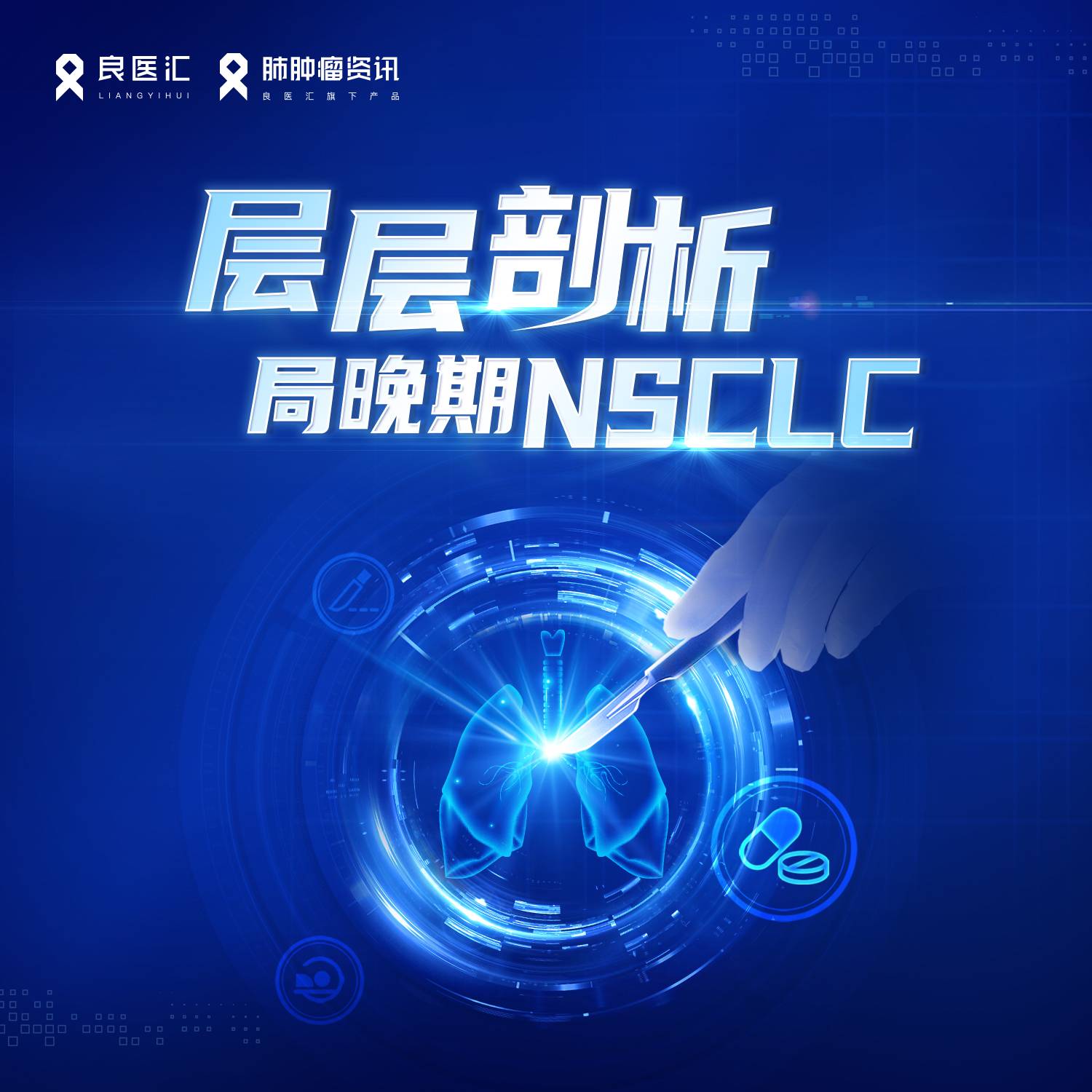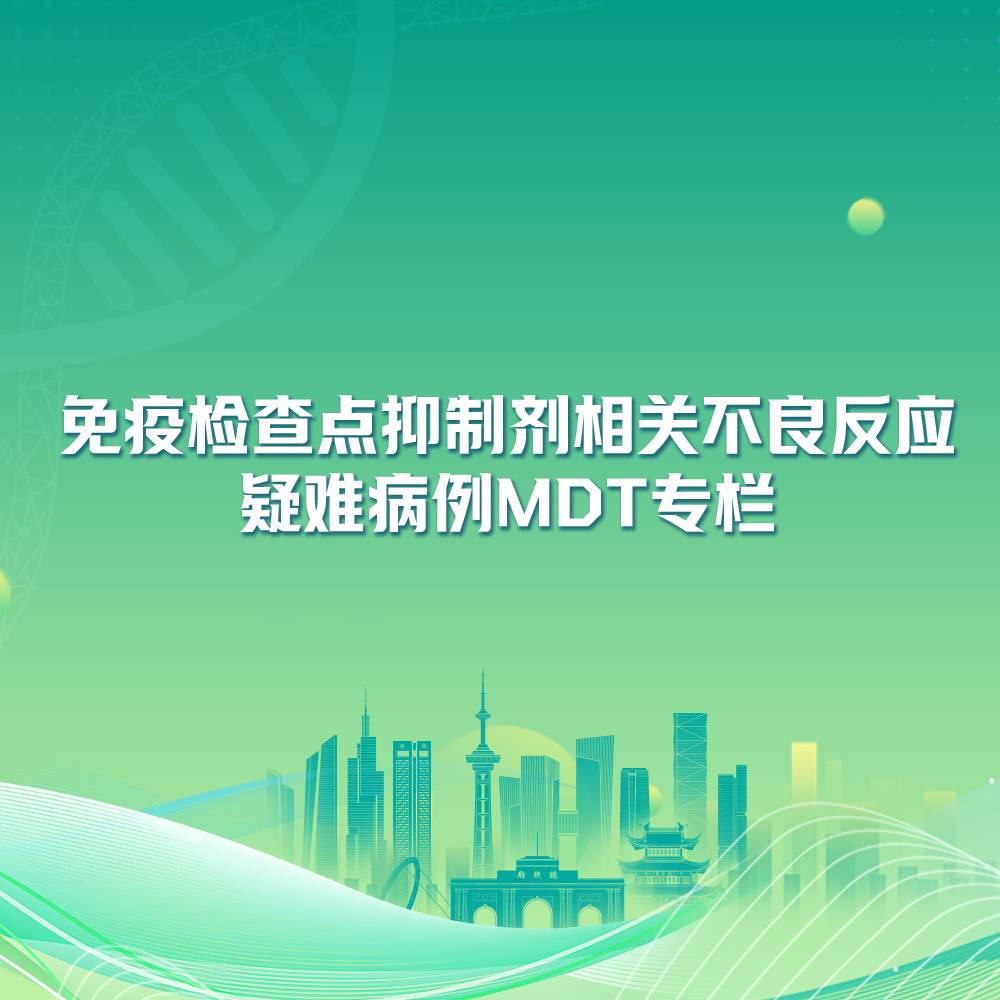作者:李雷 孙爱军
来源: 协和妇产科文献月报
绝经是现代人类寿命逐渐延长的产物,是一个在进化中被忽略的状态。绝经的本质是卵巢这一妇女必不可少的器官的功能衰竭,由于其伴随着涉及多个系统的多种绝经相关症状,并与骨质疏松症等许多极大占用医疗资源的老年慢性疾病相关。已知绝经后激素治疗(MHT)能够显著改善绝经后症状、降低骨质疏松风险、改善外阴阴道萎缩症状[1],是围绝经期女性健康管理的有效方案,也是手术绝经女性治疗绝经后症状、改善生活质量的医疗选择之一。对于MHT不良反应的主要担心是MHT增加激素依赖性肿瘤的风险,包括乳腺癌和妇科生殖道癌症。有关乳腺癌的研究数量巨大、证据比较明确,但MHT和妇科恶性肿瘤的关系研究不多,尚有很多争论。本文根据文献中发表的相关研究对此进行综述说明。
一、激素补充治疗与妇科恶性肿瘤的风险
2013年国内指南指出,MHT是否增加卵巢上皮性癌和子宫颈腺癌发生的风险目前有争议;MHT中规范应用孕激素不增加子宫内膜癌发生的风险[1]。这些结论可能需要根据新的证据进行修正。
1. 卵巢癌
既往很多小规模的观察性研究均认为MHT增加卵巢癌风险[2-11]。一项前瞻性队列研究发现,雌激素应用超过10年卵巢癌死亡的风险增加2倍[12]。一项纳入42项研究、12,238例女性的荟萃分析发现,单雌激素治疗和雌孕激素治疗的卵巢癌风险均有增加[13]。百万女性研究(Million WomenStudy)也发现单雌激素和雌孕激素治疗均增加卵巢癌风险[14]。也有研究者发现,即便是短期(0-4年)应用MHT都会显著增加卵巢癌风险,与制剂、剂量、孕激素类型、应用方法均无关[15]。
近期大规模的队列研究和荟萃分析也认为MHT显著增加卵巢癌风险。欧洲癌症和营养前瞻性研究(European Prospective Investigation into Cancer and Nutrition)对126,920例绝经后女性进行前瞻性随访,平均9年随访后发生424例卵巢癌[16]。与从来不应用雌孕激素治疗的人群相比,目前应用任何MHT方案的患者卵巢癌风险均增加(HR 1.29,95% CI 1.01-1.65),但既往应用者的风险没有增加(HR 0.96,95% CI 0.70-1.30)。2015年一项针对52项流行病学研究的荟萃分析[17]纳入12,110绝经后发生卵巢癌的女性,其中55%应用过激素治疗,应用MHT显著增加卵巢癌风险:曾经应用MHT(即使应用时间<5年)的卵巢癌RR为1.43(95% CI 1.31-1.56),曾经或近期应用者的RR为1.37(95% CI 1.29-1.46)。终止时间越长,卵巢癌风险越小。换算起来,在50岁前后应用MHT为期5年左右,将导致额外1/1000的卵巢癌风险,以及1/1700的死亡风险[17]。当然,这种风险的绝对值很小。
也有很高级别的证据不支持MHT增加卵巢癌风险的结论。随机双盲安慰剂对照的妇女健康运动(WHI)研究发现,尽管MHT增加卵巢癌风险,但没有显著差异。该研究2003年的报道发现,应用MHT后总体妇科癌症的发生率很低,16,608例女性中发生32例卵巢癌、58例内膜癌、1例非内膜样宫体癌症、13例宫颈癌和7例其他妇科癌症。而且应用MHT并不增加卵巢癌风险(HR 1.58,95% CI 0.77-3.24),肿瘤组织学、分期、分化程度和MHT都没有显著相关[11]。WHI到2013年发表的长达13年的随访报道发现,应用雌孕激素方案进行MHT的女性和应用安慰剂的女性相比,在干预阶段卵巢癌的风险并没有显著差异(HR 1.41,95% CI 0.75-2.66);到了干预后阶段,卵巢癌风险依然没有显著差异(HR 1.24,95% CI 0.83-1.12)[18]。即便如此,应用MHT的女性其卵巢癌风险仍然呈现上升趋势,对此研究的解释应保持慎重。
不同MHT方案对于卵巢癌的风险也有差别。单雌激素治疗的风险似乎超过雌孕激素治疗[16, 19, 20]。甚至有研究发现,雌孕激素治疗中每个周期孕激素使用时间<15天和≥15天对于卵巢癌风险都有差异(RR分别为3.09和1.82,95% CI分别为1.68-5.68和1.03-3.23)[21]。荟萃分析也证实单雌激素治疗与卵巢癌的关系更加密切[22]。一项系统性回顾中,每使用5年MHT,单雌激素相关的卵巢癌风险RR1.22,(95% CI 1.18-1.27),雌孕激素的风险RR 1.10(95% CI 1.04-1.16)[23]。前瞻性队列研究中替勃龙治疗增加2倍的卵巢癌风险(HR2.19,95% CI 1.06-4.50)[16]。
MHT导致的卵巢癌风险可能与具体病理类型有关。有些研究发现MHT会增加非粘液样肿瘤的风险[14, 24-28],但也有研究认为粘液样癌的风险相似甚至更高[13, 16]。荟萃分析发现,无论是单雌激素还是雌孕激素治疗都显著增加卵巢浆液性癌(RR 1.53,95% CI 1.40-1.66)和内膜样癌(RR 1.42,95% CI 1.20-1.67)的风险,即便是MHT终止10年后,浆液性或内膜样卵巢癌的风险依然上升;粘液性癌和透明细胞癌风险则不受影响[17]。Riman等发现MHT增加浆液性交界性肿瘤的风险[29],既往没有卵管结扎或全子宫切除术史的患者风险更高[30],MHT应用超过4年交界性肿瘤的风险显著增加[31]。
2. 内膜癌
已知外源性雌激素是内膜癌的高危因素之一[32]。合理地应用孕激素进行MHT并不增加、甚至可以降低内膜癌风险。对于保留子宫的女性,单雌激素治疗可能导致内膜增生、增加内膜癌的风险,因此需要孕激素的拮抗[33]。芬兰的一项全国性病历对照研究[34]纳入7,261例绝经后内膜癌患者以及三倍的年龄匹配的对照人群,在多元回归模型中,应用MHT<5年的情况中,序贯雌孕激素治疗(OR 0.67,95% CI 0.52-0.86)、连续雌孕激素治疗(OR 0.45,95% CI 0.27-0.73)和雌激素/左炔诺孕酮宫内缓释系统(LNG-IUS)治疗(OR 0.39,95% CI 0.17-0.88)都降低内膜癌风险。连续雌孕激素和雌激素/LNG-IUS的治疗降低内膜癌风险的效果可持续10年之久。应用长周期雌孕激素治疗无论小于5年(OR 1.40,95% CI 0.82-2.38)还是超过5年(OR 1.63,95% CI 1.12-2.38)都有增加内膜癌风险的趋势。如果暴露超过10年,长周期雌孕激素治疗(OR 2.95,95% CI 2.40-3.62)和序贯雌孕激素治疗(OR 1.38-1.66)都增加内膜癌风险。
WHI研究为MHT的内膜癌风险提供了最有力的证据。WHI研究中16,608例绝经后女性随机接受连续雌孕激素治疗或安慰剂,经过中位5.6年的干预和中位13年随访,MHT组内膜癌发生率更低(0.06% vs. 0.10%,HR 0.65,95% CI 0.48-0.89)。在干预期MHT组内膜癌的风险没有显著降低(HR 0.77,95% CI 0.45-1.31),但是干预后的随访期MHT组内膜癌风险显著降低(HR 0.59,95% CI 0.40-0.88)。MHT组内膜癌死亡风险降低,但和对照组相比没有显著差异(5例vs.11例,HR 0.42,95% CI 0.15-1.22)[35]。
阴道用雌激素并不增加内膜癌风险。一项队列研究中443例接受阴道雌激素的女性接受了内膜活检,85.6%为萎缩性子宫内膜,12.6%没有可以评估的样本,1.1%为息肉,0.2%为增殖期内膜,仅有1例为复杂增生[36]。另一项研究中,336例女性接受阴道雌激素治疗后1年,内膜病理未发现任何增生或癌变[37]。
不同孕激素制剂对于内膜癌的风险是类似的。甲地孕酮和甲羟孕酮对于内膜癌的风险是类似的。大规模的随机研究已经证实替勃龙并不显著增加内膜癌风险[34, 38],而且绝经后应用替勃龙的女性和应用雌孕激素的情况相比不规则出血的风险更低[38]。但替勃龙和安慰剂相比,应用3年后将轻微增加内膜厚度、增生性息肉、内膜癌和阴道流血的风险[39],且替勃龙治疗绝经后症状的效力不如复方MHT方案[40]。
3. 宫颈癌
小规模的病例对照研究发现雌激素治疗与HPV携带或复制无关[41],并不增加宫颈癌风险[42]。
二、妇科恶性肿瘤治疗后激素补充治疗的风险
在美国,宫体肿瘤占女性恶性肿瘤发病率的第4位,而卵巢癌、宫体肿瘤占女性恶性肿瘤死亡率的第5位、第6位[1]。在我国,宫颈癌、卵巢癌和宫体肿瘤占女性恶性肿瘤新发病例发病率的第7位、第11位和第10位,占死亡率的第9位、第10位和第12位,总体上女性生殖道癌症的新发病例数不逊于其他部位的癌症病例数[43]。妇科癌症的治疗对女性的生活质量有显著影响,绝大部分治疗都需要切除卵巢,或相应辅助治疗破坏卵巢功能,导致急性的绝经症状。大约25%的妇科癌症患者诊断时处于绝经前或围绝经期,她们能否接受MHT仍需严格的证据支持。目前研究的主要缺点在于严格的前瞻性对照研究少,总体的研究规模小。2013年的国内指南认为,妇科恶性肿瘤患者术后MHT目前尚缺乏循证医学研究证据,总体原则应该持慎重态度,与患者充分沟通,知情选择{中华医学会妇产科学分会绝经学组, 2013 #86330}。我们对此说明如下。
1. 卵巢癌
卵巢癌术后应用MHT的研究结论比较一致,都未发现MHT影响卵巢癌的生存预后[44-47]。近期还有证据认为MHT能够改善卵巢癌患者的预后。一项较大的前瞻性队列研究纳入649例侵袭性卵巢癌和150例交界性卵巢肿瘤患者。在诊断卵巢癌前应用MHT的患者5年总体生存(OS)并没有显著区别,但是在诊断后应用MHT的患者其5年OS更好一些(HR 0.57,95% CI 0.42-0.78)。而交界性肿瘤无论是诊断前还是诊断后应用MHT,其预后都没有什么影响[48]。一项前瞻性随机对照研究发现,在卵巢癌治疗后接受MHT的患者其OS(HR 0.63,95% CI 0.44-0.90)和无复发生存(HR 0.67,95% CI 0.47-0.97)均显著改善。根据已知预后因素进行调整后MHT对生存的保护效应依然非常明显[49]。2015年一项系统性综述和荟萃分析发现,在上皮性卵巢癌(EOC)治疗后应用激素补充治疗可以延长OS(HR 0.69,95% CI 0.61-0.79),但如果将研究内容分为队列分析和随机对照研究,前者的HR 0.63(95% CI 0.49-0.81),后者的HR 1.03(95% CI 0.59-1.83)。EOC术后应用MHT并不增加复发率(RR 0.83,95% CI 0.64-1.07)[50]。有关不同卵巢癌病理类型患者应用MHT的预后其研究还较少。
2. 内膜癌
大约20-25%的内膜癌患者为绝经前女性,5%诊断时年龄<40岁,这些患者应用MHT的风险是关注点之一。目前的研究均认为MHT并不影响早期内膜癌患者的预后。小规模研究发现在早期内膜癌术后患者应用雌激素治疗并不增加内膜癌复发风险[51, 52]。一项对照研究中,I期内膜癌患者,应用雌激素的患者和应用安慰剂相比,复发率更低(2.1% vs. 14.9%),无病生存和OS时间更长[53]。另一项对照研究中,44例应用口服雌激素的I期内膜癌患者和99例对照相比,复发率分别为0和8%,但是该研究有较为严重的选择偏倚[54]。另一项对照研究中,I-II期内膜患者随机接受MHT(中位时间8个月)或不行MHT的治疗,两组的复发率和OS没有显著差异[55]。一项I-III期内膜癌患者的研究中,75例行MHT和75例对照组相比,复发率分别为1%和14%,MHT组无病生存时间显著延长[56]。50例术后应用4-8周MHT的I-II期内膜癌患者和52例对照患者中,分别出现0例和1例复发[57]。迄今唯一的前瞻性随机对照研究纳入1236例患者,但是在WHI结论发表后该研究即提前终止了,但终止时的数据显示MHT组和安慰剂组的复发率(2.3% vs. 1.9%)和死亡率(0.8% vs. 0.6%)都很低[58]。荟萃分析发现内膜癌生存者中应用MHT和不应用MHT相比,复发率没有显著增加(OR0.53,95% CI 0.30-0.96)[59]。但是由于纳入研究几乎均为观察性研究,MHT应用时间也很短,影响了这些结论的可靠性。
对于内膜癌患者的生存预后,雌孕激素方案的MHT似乎优于单纯雌激素方案[59]。术后应用MHT的时机还不清楚。有研究者认为,由于内膜癌复发多在术后2年内,因此建议MHT不应在此期间开始[60]。但是绝大部分研究认为还是应该及早开始MHT。
3. 其他妇科恶性肿瘤
宫颈癌:前瞻性研究发现宫颈鳞癌术后接受MHT和不接受MHT的患者其总体生存和无复发生存均无显著差异[61]。有研究者建议宫颈腺癌的情况可能需要和内膜癌一样处理[62]。阴道局部用雌激素并不影响宫颈癌的长期生存[61, 63]。
子宫肉瘤:对于子宫肉瘤,只有内膜间质肉瘤是雌激素依赖性的,应避免MHT,而癌肉瘤、平滑肌肉瘤、腺肉瘤尽管可能有雌孕激素受体的表达,但是目前的建议认为都没有MHT的禁忌证[64-67]。这方面的病例数和支持证据均很少。
外阴癌:外阴鳞癌并非雌激素依赖性疾病,外用和口服雌激素制剂并没有禁忌。观察性研究发现激素治疗对于外阴黑色素瘤的生存预后和复发并没有影响。一项206例绝经后外阴黑色素瘤患者经过平均11年的随访,发现激素治疗的患者预后生存预后更佳(HR 0.17,95% CI 0.05-0.62)[68]。对于起源自巴氏腺的腺癌或Paget氏病的腺癌,由于发生率较低,尚没有数据反对或支持应用激素治疗。
阴道癌:阴道癌非常罕见。阴道鳞癌并不是雌激素依赖性疾病,可能没有MHT的紧急。阴道腺癌和MHT的关系则没有确切证据[69]。
责任编辑:king
参考文献
[1]中华医学会妇产科学分会绝经学组. 绝经期管理与激素补充治疗临床应用指南(2012版)[J].中华妇产科杂志, 2013,48(10):795-799.
[2]Chiaffarino F, Pelucchi C, Parazzini F, et al. Reproductive and hormonalfactors and ovarian cancer[J]. Ann Oncol, 2001,12(3):337-41.
[3]Bosetti C, Negri E, Franceschi S, et al. Relationship between postmenopausalhormone replacement therapy and ovarian cancer[J]. JAMA, 2001,285(24):3089;author reply 3090.
[4]Garg PP, Kerlikowske K, Subak L, et al. Hormone replacement therapy and therisk of epithelial ovarian carcinoma: a meta-analysis[J]. Obstet Gynecol,1998,92(3):472-9.
[5]Lacey JV, Jr., Mink PJ, Lubin JH, et al. Menopausal hormone replacement therapyand risk of ovarian cancer[J]. JAMA, 2002,288(3):334-41.
[6]Negri E, Tzonou A, Beral V, et al. Hormonal therapy for menopause and ovariancancer in a collaborative re-analysis of European studies[J]. Int J Cancer,1999,80(6):848-51.
[7]Riman T, Dickman PW, Nilsson S, et al. Hormone replacement therapy and the riskof invasive epithelial ovarian cancer in Swedish women[J]. J Natl Cancer Inst,2002,94(7):497-504.
[8]Ortmann O, Doren M, Windler E. Hormone therapy in perimenopause andpostmenopause (HT). Interdisciplinary S3 Guideline, Association of theScientific Medical Societies in Germany AWMF 015/062-short version[J]. ArchGynecol Obstet, 2011,284(2):343-55.
[9]Trabert B, Wentzensen N, Yang HP, et al. Ovarian cancer and menopausal hormonetherapy in the NIH-AARP diet and health study[J]. Br J Cancer,2012,107(7):1181-7.
[10]Glud E, Kjaer SK, Thomsen BL, et al. Hormone therapy and the impact of estrogenintake on the risk of ovarian cancer[J]. Arch Intern Med, 2004,164(20):2253-9.
[11]Anderson GL, Judd HL, Kaunitz AM, et al. Effects of estrogen plus progestin ongynecologic cancers and associated diagnostic procedures: the Women's HealthInitiative randomized trial[J]. JAMA, 2003,290(13):1739-48.
[12]Rodriguez C, Patel AV, Calle EE, et al. Estrogen replacement therapy andovarian cancer mortality in a large prospective study of US women[J]. JAMA,2001,285(11):1460-5.
[13]Greiser CM, Greiser EM, Doren M. Menopausal hormone therapy and risk of ovariancancer: systematic review and meta-analysis[J]. Hum Reprod Update,2007,13(5):453-63.
[14]Beral V, Bull D, Green J, et al. Ovarian cancer and hormone replacement therapyin the Million Women Study[J]. Lancet, 2007,369(9574):1703-10.
[15]Morch LS, Lokkegaard E, Andreasen AH, et al. Hormone therapy and ovariancancer[J]. JAMA, 2009,302(3):298-305.
[16]Tsilidis KK, Allen NE, Key TJ, et al. Menopausal hormone therapy and risk ofovarian cancer in the European prospective investigation into cancer andnutrition[J]. Cancer Causes Control, 2011,22(8):1075-84.
[17]Menopausal hormone use and ovarian cancer risk: individual participantmeta-analysis of 52 epidemiological studies[J]. Lancet,2015,385(9980):1835-1842.
[18]Manson JE, Chlebowski RT, Stefanick ML, et al. Menopausal hormone therapy andhealth outcomes during the intervention and extended poststopping phases of theWomen's Health Initiative randomized trials[J]. JAMA, 2013,310(13):1353-68.
[19]Rossing MA, Cushing-Haugen KL, Wicklund KG, et al. Menopausal hormone therapyand risk of epithelial ovarian cancer[J]. Cancer Epidemiol Biomarkers Prev,2007,16(12):2548-56.
[20]Hildebrand JS, Gapstur SM, Feigelson HS, et al. Postmenopausal hormone use andincident ovarian cancer: Associations differ by regimen[J]. Int J Cancer,2010,127(12):2928-35.
[21]Lacey JV, Jr., Brinton LA, Leitzmann MF, et al. Menopausal hormone therapy andovarian cancer risk in the National Institutes of Health-AARP Diet and HealthStudy Cohort[J]. J Natl Cancer Inst, 2006,98(19):1397-405.
[22]Zhou B, Sun Q, Cong R, et al. Hormone replacement therapy and ovarian cancerrisk: A meta-analysis[J]. Gynecol Oncol, 2008,108(3):641-651.
[23]Pearce CL, Chung K, Pike MC, et al. Increased ovarian cancer risk associatedwith menopausal estrogen therapy is reduced by adding a progestin[J]. Cancer,2009,115(3):531-9.
[24]Soegaard M, Jensen A, Hogdall E, et al. Different risk factor profiles formucinous and nonmucinous ovarian cancer: results from the Danish MALOVAstudy[J]. Cancer Epidemiol Biomarkers Prev, 2007,16(6):1160-6.
[25]Purdie DM, Bain CJ, Siskind V, et al. Hormone replacement therapy and risk ofepithelial ovarian cancer[J]. Br J Cancer, 1999,81(3):559-63.
[26]Noller KL. Estrogen replacement therapy and risk of ovarian cancer[J]. JAMA,2002,288(3):368-9.
[27]Yang HP, Trabert B, Murphy MA, et al. Ovarian cancer risk factors by histologicsubtypes in the NIH-AARP Diet and Health Study[J]. Int J Cancer,2012,131(4):938-48.
[28]Matei MC, Caruntu ID, Negura L, et al. The assessment of relations between mainhistologic type of ovarian cancer and some risk and prognostic factors[J]. RevMed Chir Soc Med Nat Iasi, 2010,114(4):1135-41.
[29]Riman T, Dickman PW, Nilsson S, et al. Risk factors for epithelial borderlineovarian tumors: results of a Swedish case-control study[J]. Gynecol Oncol,2001,83(3):575-85.
[30]Mills PK, Riordan DG, Cress RD, et al. Hormone replacement therapy and invasiveand borderline epithelial ovarian cancer risk[J]. Cancer Detect Prev,2005,29(2):124-32.
[31]Morch LS, Lokkegaard E, Andreasen AH, et al. Hormone therapy and ovarianborderline tumors: a national cohort study[J]. Cancer Causes Control,2012,23(1):113-20.
[32]Beral V, Bull D, Reeves G. Endometrial cancer and hormone-replacement therapyin the Million Women Study[J]. Lancet, 2005,365(9470):1543-51.
[33]Furness S, Roberts H, Marjoribanks J, et al. Hormone therapy in postmenopausalwomen and risk of endometrial hyperplasia[J]. Cochrane Database Syst Rev,2012(8):CD000402.
[34]Jaakkola S, Lyytinen HK, Dyba T, et al. Endometrial cancer associated withvarious forms of postmenopausal hormone therapy: a case control study[J]. Int JCancer, 2011,128(7):1644-51.
[35]Chlebowski RT, Anderson GL, Sarto GE, et al. Continuous Combined Estrogen PlusProgestin and Endometrial Cancer: The Women's Health Initiative RandomizedTrial[J]. J Natl Cancer Inst, 2016,108(3).
[36]Simon J, Nachtigall L, Ulrich LG, et al. Endometrial safety of ultra-low-doseestradiol vaginal tablets[J]. Obstet Gynecol, 2010,116(4):876-83.
[37]Ulrich LS, Naessen T, Elia D, et al. Endometrial safety of ultra-low-doseVagifem 10 microg in postmenopausal women with vaginal atrophy[J]. Climacteric,2010,13(3):228-37.
[38]Archer DF, Hendrix S, Gallagher JC, et al. Endometrial effects of tibolone[J].J Clin Endocrinol Metab, 2007,92(3):911-8.
[39]Ettinger B, Kenemans P, Johnson SR, et al. Endometrial effects of tibolone inelderly, osteoporotic women[J]. Obstet Gynecol, 2008,112(3):653-9.
[40]Formoso G, Perrone E, Maltoni S, et al. Short and long term effects of tibolonein postmenopausal women[J]. Cochrane Database Syst Rev, 2012(2):CD008536.
[41]Ferenczy A, Gelfand MM, Franco E, et al. Human papillomavirus infection inpostmenopausal women with and without hormone therapy[J]. Obstet Gynecol,1997,90(1):7-11.
[42]Parazzini F, La Vecchia C, Negri E, et al. Case-control study of oestrogenreplacement therapy and risk of cervical cancer[J]. BMJ, 1997,315(7100):85-8.
[43]Chen W, Zheng R, Baade PD, et al. Cancer statistics in China, 2015[J]. CACancer J Clin, 2016,66(2):115-132.
[44]Eeles RA, Tan S, Wiltshaw E, et al. Hormone replacement therapy and survivalafter surgery for ovarian cancer[J]. BMJ, 1991,302(6771):259-62.
[45]Guidozzi F, Daponte A. Estrogen replacement therapy for ovarian carcinomasurvivors: A randomized controlled trial[J]. Cancer, 1999,86(6):1013-8.
[46]Ursic-Vrscaj M, Bebar S, Zakelj MP. Hormone replacement therapy after invasiveovarian serous cystadenocarcinoma treatment: the effect on survival[J].Menopause, 2001,8(1):70-5.
[47]Bebar S, Ursic-Vrscaj M. Hormone replacement therapy after epithelial ovariancancer treatment[J]. Eur J Gynaecol Oncol, 2000,21(2):192-6.
[48]Mascarenhas C, Lambe M, Bellocco R, et al. Use of hormone replacement therapybefore and after ovarian cancer diagnosis and ovarian cancer survival[J]. Int JCancer, 2006,119(12):2907-15.
[49]Eeles RA, Morden JP, Gore M, et al. Adjuvant Hormone Therapy May ImproveSurvival in Epithelial Ovarian Cancer: Results of the AHT Randomized Trial[J].J Clin Oncol, 2015,33(35):4138-44.
[50]Li D, Ding CY, Qiu LH. Postoperative hormone replacement therapy for epithelialovarian cancer patients: a systematic review and meta-analysis[J]. GynecolOncol, 2015,139(2):355-62.
[51]Baker DP. Estrogen-replacement therapy in patients with previous endometrialcarcinoma[J]. Compr Ther, 1990,16(1):28-35.
[52]Bryant GW. Administration of estrogens to patients with a previous diagnosis ofendometrial adenocarcinoma[J]. South Med J, 1990,83(6):725-6.
[53]Creasman WT, Henderson D, Hinshaw W, et al. Estrogen replacement therapy in thepatient treated for endometrial cancer[J]. Obstet Gynecol, 1986,67(3):326-30.
[54]Lee RB, Burke TW, Park RC. Estrogen replacement therapy following treatment forstage I endometrial carcinoma[J]. Gynecol Oncol, 1990,36(2):189-91.
[55]Chapman JA, DiSaia PJ, Osann K, et al. Estrogen replacement in surgical stage Iand II endometrial cancer survivors[J]. Am J Obstet Gynecol,1996,175(5):1195-200.
[56]Suriano KA, McHale M, McLaren CE, et al. Estrogen replacement therapy inendometrial cancer patients: a matched control study[J]. Obstet Gynecol,2001,97(4):555-60.
[57]Ayhan A, Taskiran C, Simsek S, et al. Does immediate hormone replacementtherapy affect the oncologic outcome in endometrial cancer survivors?[J]. Int JGynecol Cancer, 2006,16(2):805-8.
[58]Barakat RR, Bundy BN, Spirtos NM, et al. Randomized double-blind trial ofestrogen replacement therapy versus placebo in stage I or II endometrialcancer: a Gynecologic Oncology Group Study[J]. J Clin Oncol, 2006,24(4):587-92.
[59]Shim SH, Lee SJ, Kim SN. Effects of hormone replacement therapy on the rate ofrecurrence in endometrial cancer survivors: a meta-analysis[J]. Eur J Cancer,2014,50(9):1628-37.
[60]Levgur M. Estrogen and combined hormone therapy for women after genital malignancies:a review[J]. J Reprod Med, 2004,49(10):837-48.
[61]Ploch E. Hormonal replacement therapy in patients after cervical cancertreatment[J]. Gynecol Oncol, 1987,26(2):169-77.
[62]Biglia N, Bounous VE, Sgro LG, et al. Treatment of climacteric symptoms insurvivors of gynaecological cancer[J]. Maturitas, 2015,82(3):296-8.
[63]Sturdee DW, Panay N. Recommendations for the management of postmenopausalvaginal atrophy[J]. Climacteric, 2010,13(6):509-22.
[64]Guidozzi F. Estrogen therapy in gynecological cancer survivors[J]. Climacteric,2013,16(6):611-7.
[65]Thanopoulou E, Judson I. Hormonal therapy in gynecological sarcomas[J]. ExpertRev Anticancer Ther, 2012,12(7):885-94.
[66]Hinds L, Price J. Menopause, hormone replacement and gynaecological cancers[J].Menopause Int, 2010,16(2):89-93.
[67]Chu MC, Mor G, Lim C, et al. Low-grade endometrial stromal sarcoma: hormonalaspects[J]. Gynecol Oncol, 2003,90(1):170-6.
[68]MacKie RM, Bray CA. Hormone replacement therapy after surgery for stage 1 or 2cutaneous melanoma[J]. Br J Cancer, 2004,90(4):770-2.
[69]Madsen BS, Jensen HL, van den Brule AJ, et al. Risk factors for invasivesquamous cell carcinoma of the vulva and vagina--population-based case-controlstudy in Denmark[J]. Int J Cancer, 2008,122(12):2827-34.















 苏公网安备32059002004080号
苏公网安备32059002004080号


